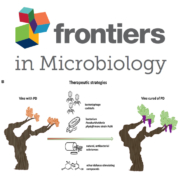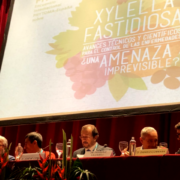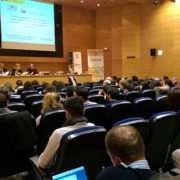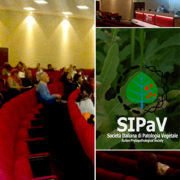Pierce’s Disease of grapevines: a review of control strategies and an outline of an epidemiological model
Frontiers in Microbiology, 12 September 2018 | https://doi.org/10.3389/fmicb.2018.02141
Authors
Affiliations
1Laboratory of Environmental Microbiology and Biotechnology, Department of Environmental Science, Aarhus University, Roskilde, Denmark. 2INRIA Grenoble Rhône-Alpes, Montbonnot-Saint-Martin, France. 3Laboratoire de Biométrie et Biologie Évolutive, UMR 5558, CNRS, Université de Lyon, Université Lyon 1, Villeurbanne, France. 4Department of Computer, Automatic and Management Engineering, Sapienza University of Rome, Rome, Italy
Abstract
Xylella fastidiosa is a notorious plant pathogenic bacterium that represents a threat to crops worldwide. Its subspecies, Xylella fastidiosa subsp. fastidiosa is the causal agent of Pierce’s disease of grapevines. Pierce’s disease has presented a serious challenge for the grapevine industry in the United States and turned into an epidemic in Southern California due to the invasion of the insect vector Homalodisca vitripennis. In an attempt to minimize the effects of Xylella fastidiosa subsp. fastidiosa in vineyards, various studies have been developing and testing strategies to prevent the occurrence of Pierce’s disease, i.e., prophylactic strategies. Research has also been undertaken to investigate therapeutic strategies to cure vines infected by Xylella fastidiosa subsp. fastidiosa. This report explicitly reviews all the strategies published to date and specifies their current status. Furthermore, an epidemiological model of Xylella fastidiosa subsp. fastidiosa is proposed and key parameters for the spread of Pierce’s disease deciphered in a sensitivity analysis of all model parameters. Based on these results, it is concluded that future studies should prioritize therapeutic strategies, while investments should only be made in prophylactic strategies that have demonstrated promising results in vineyards.
Published on September 12, 2018 by FRONTIERS IN PLANT SCIENCES









